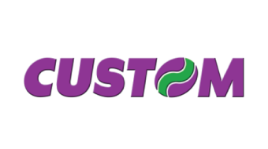RFID READER ANTENNAS
Antennas are crucial components in an RFID system, connecting to RFID readers to enable the detection and reading of RFID tags. They play a pivotal role in determining the range, directionality, and overall effectiveness of an RFID system. Different types of antennas can be used depending on the specific requirements of an application, including their placement, the environment they operate in, and the type of RFID technology being used (such as low frequency, high frequency, or ultra-high frequency).
Key Features of RFID Reader Antennas
Frequency Range: RFID antennas are designed to operate at specific frequencies that correspond to the RFID standards: Low Frequency (LF) at 125-134 kHz, High Frequency (HF) at 13.56 MHz, and Ultra-High Frequency (UHF) at 860-960 MHz. The frequency determines the antenna's range and the environments in which it can effectively operate.
Gain and Directivity: The gain of an antenna affects how well it can read tags in its vicinity, with higher gain antennas being capable of reading tags at greater distances. Directivity refers to the direction in which the antenna emits and receives radio waves. Highly directional antennas focus energy in a specific direction, enhancing reading accuracy and distance in that direction.
Polarization: RFID antennas can be either linearly or circularly polarized. Linear polarization requires that the tag and antenna are aligned for optimal reading, while circular polarization provides more flexibility in tag detection as the orientation of the tag is less critical.
Physical Durability: Many RFID antennas are designed to withstand harsh environments, which is crucial for industrial or outdoor applications. They may be encased in materials that protect them from water, dust, and physical impacts.
Size and Shape: The size and shape of an antenna can vary widely based on its intended use. Larger antennas are generally used for applications where tags need to be read over longer distances, whereas smaller antennas are suitable for more confined spaces.
Applications of RFID Reader Antennas
- Supply Chain and Logistics: Antennas at docking stations and warehouse entrances can track goods as they enter and leave, improving inventory accuracy and reducing losses.
- Retail: In retail settings, antennas integrated into shelves, entryways, and point-of-sale systems help manage inventory and prevent theft.
- Access Control: In security applications, RFID antennas control access to buildings or secure areas by reading badges or tags.
- Asset Tracking: In industries like healthcare and manufacturing, antennas track high-value equipment or materials to optimize usage and prevent unauthorized removal.
Popular Types of RFID Reader Antennas
- Patch Antenna: Often used in controlled environments like offices or retail stores for their moderate range and directivity.
- Dipole Antenna: Commonly used for broader coverage areas due to their omnidirectional pattern, making them ideal for applications where tag orientation cannot be controlled.
- Panel Antenna: Used for long-range reading and specific directional focus, suitable for tracking goods in large open areas like loading docks and parking lots.
Choosing the right type of antenna is critical to the success of an RFID system, as it directly impacts the system's efficiency, the reliability of tag reads, and overall system costs. Integration of the right antennas with RFID readers helps ensure that data from RFID tags is accurately and reliably captured across various applications and environments.
ZEBRA AN440 RFID ANTENNA
ZEBRA AN480 RFID Antenna
ZEBRA AN510 Ultra-Rugged RFID Antennas
ZEBRA AN520 Ultra-Rugged RFID Antennas
Zebra AN720 RFID Antenna
Zebra AN610 RFID Antenna
- 1
- 2




























































